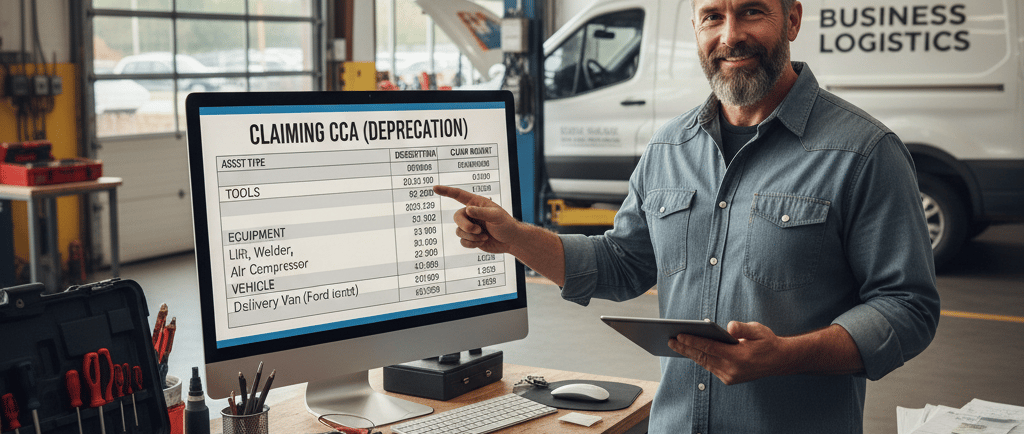Claiming CCA (Depreciation) on Tools, Equipment, and Vehicles in Canada
Learn how to claim Capital Cost Allowance (CCA) on your tools, equipment, and vehicle in Canada. Understand classes, rates, and tips to maximize your tax deductions as a business owner.
10/19/20253 min read


What Is Capital Cost Allowance (CCA)?
Capital Cost Allowance — or CCA — is the term the Canada Revenue Agency (CRA) uses for depreciation. It’s the way business owners can write off the cost of long-term assets that help generate income, such as tools, equipment, and vehicles.
Instead of deducting the full cost in the year you buy the item, you spread the expense over several years. This reflects how the asset loses value with use, giving you consistent tax deductions over time.
How CCA Works for Tools, Equipment, and Vehicles
Every type of asset is assigned to a “class” by the CRA, and each class has its own depreciation rate.
Tools and small equipment usually fall under Class 8, which allows you to claim 20% each year.
Computers and software are generally Class 50, with a faster rate of 55%.
Vehicles, such as cars or trucks used for business, fall under Class 10 or 10.1 at 30%.
Zero-emission vehicles are in Class 54, also with a 30% rate.
Buildings and structures typically belong to Class 1, with a slower rate of 4%.
If your tools or equipment cost less than $500, you can usually expense them right away instead of claiming CCA over time.
Claiming CCA on Your Vehicle
If you use your vehicle for business, you can claim CCA on the portion that’s used for work.
For example, if you drive your car 70% for business and 30% for personal use, you can claim 70% of the CCA amount.
Make sure to keep a mileage log to prove your business usage.
You can also deduct related costs — like fuel, maintenance, insurance, and parking — separately from CCA.
Claiming CCA on Tools and Equipment
When you buy tools or machines that last more than a year, they’re considered capital assets. You can’t deduct the entire purchase right away, but you can claim a portion each year according to the CCA rate for that asset class.
For instance, if you buy $2,000 worth of tools under Class 8, the rate is 20%. However, due to the half-year rule, you can only claim half the rate — or 10% — in the first year. That means you claim $200 in year one, and continue claiming 20% of the remaining balance in the following years.
Understanding the Half-Year Rule
The half-year rule is a simple but important detail. In the year you acquire a new asset, you can only claim half of its normal CCA rate, regardless of when you bought it. This rule prevents businesses from buying assets right before year-end just to maximize deductions.
In later years, you can claim the full rate on the remaining balance of the asset’s cost.
When You Shouldn’t Claim the Full CCA
Even though you can claim the full amount allowed, sometimes it’s smarter not to.
CCA is optional — you can choose to claim less, or even skip it for a year.
If your business income is lower than usual, it may make sense to save that deduction for a future year when your income (and therefore your tax rate) is higher. This way, you get a bigger tax benefit later.
A qualified tax professional, like those at Tiki Tax, can help you plan your CCA strategy to make the most of your deductions.
Final Thoughts
Claiming CCA on your tools, equipment, and vehicle is one of the best ways to reduce your taxable income and reinvest in your business.
The key is to:
Know which CCA class your assets belong to
Track business use accurately
Apply the half-year rule correctly
If you’re unsure how to categorize your assets or how much to claim, Tiki Tax can guide you through every step — from bookkeeping to tax filing — so you get every deduction you’re entitled to, without the headache.
TiKi Tax
© 2025. All rights reserved.
